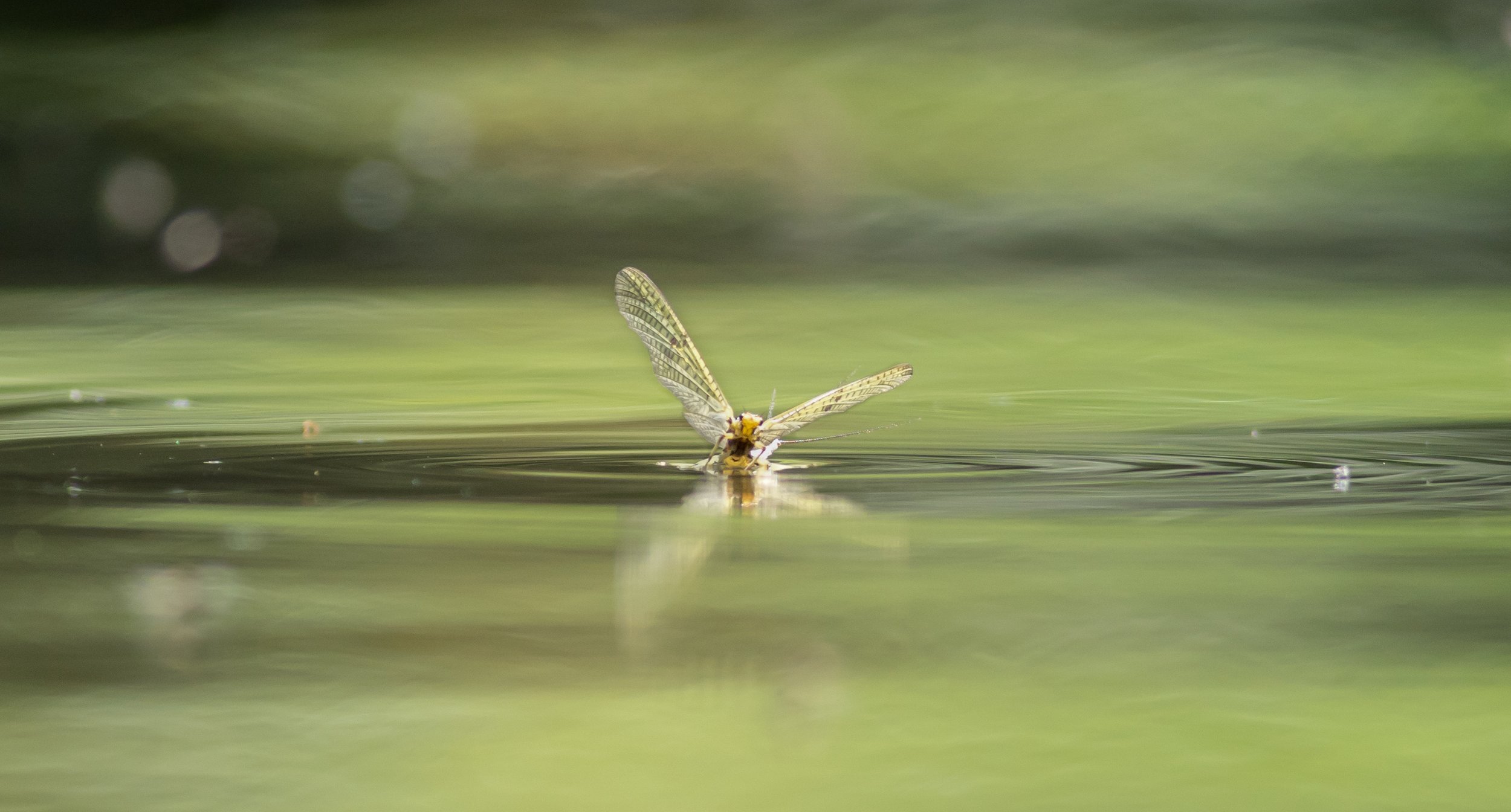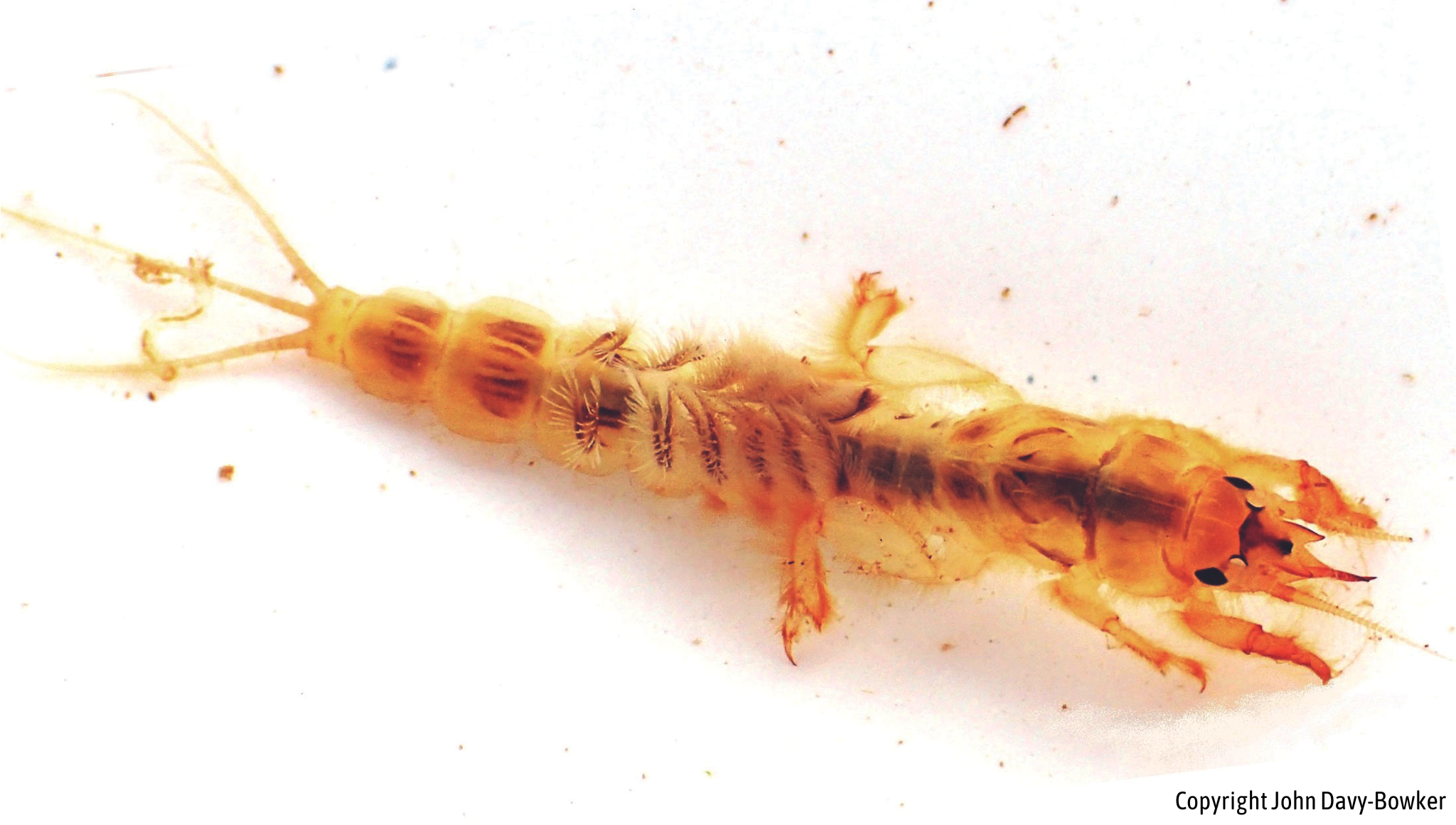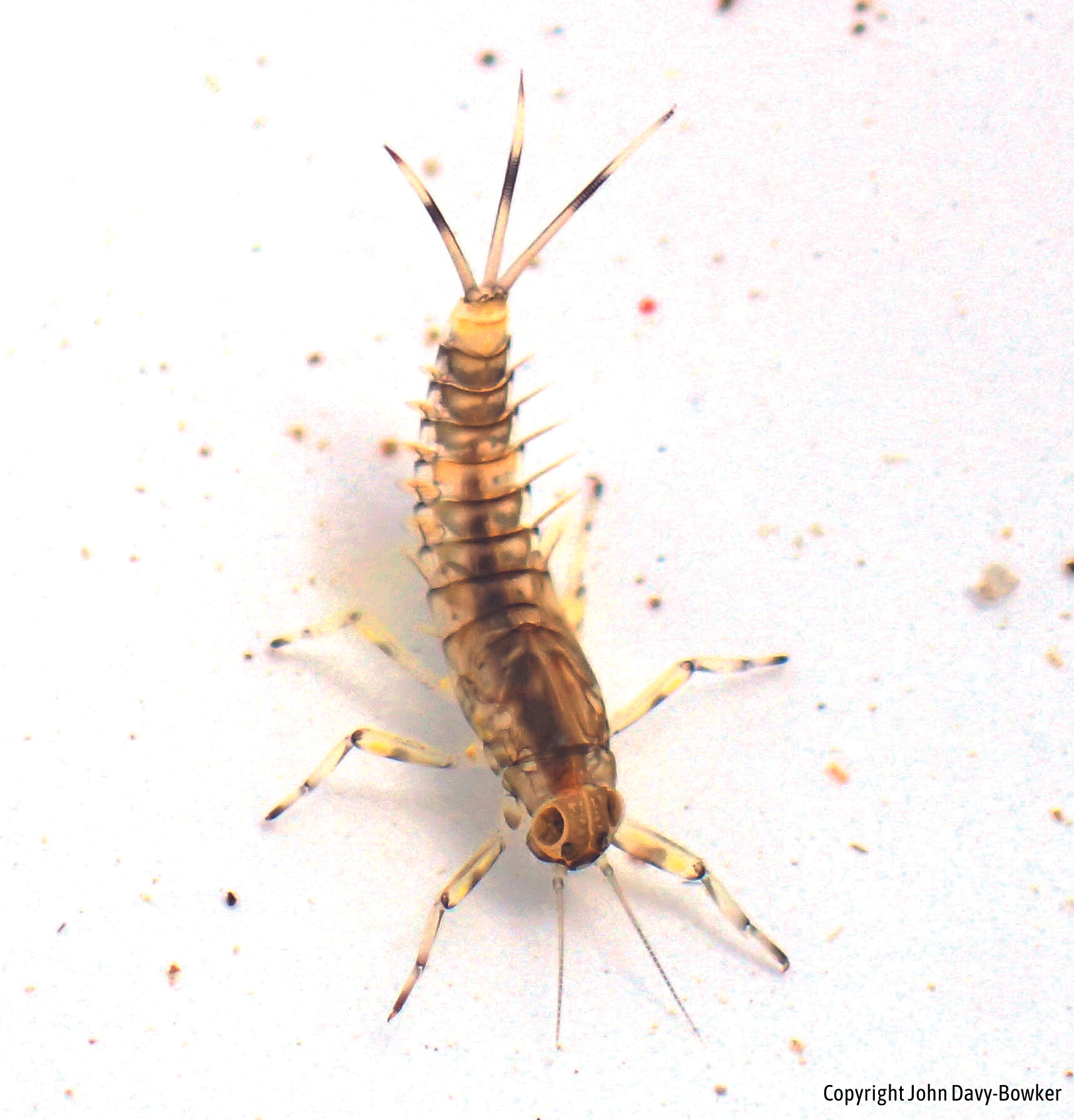
Ephemeroptera
Up-wing flies
Insects in the order Ephemeroptera are known as up-wing flies. The term mayflies is also used interchangeably, although the ‘true’ mayfly is the species Ephemera danica. There are 51 species known to be present in the British Isles, and they are unique in that they are the only insects to have two adult stages: the sub-imago (or dun) and imago (or spinner).
With fossils dating back over 300 million years, mayflies are some of the oldest winged insects known.
Their larvae are found in a wide range of freshwater habitats including rivers, lakes, canals and ditches. Adults are often seen dancing alongside the water on warm summer days — however, some species can be seen in flight throughout the year. Their wings are held upright, butterfly-like above their body.
Conservation
The list of Species of Principal Importance in England features two Ephemeroptera species: Southern Iron Blue (Nigrobaetis niger) and Yellow Mayfly (Potamanthus luteus). Both of these species are also on the list for Wales, and the Southern Iron Blue is on the Scottish Biodiversity List. Seven other species of mayfly are on 2023’s Northern Ireland Priority Species list. Inclusion on these lists means that public authorities have a duty to support conservation measures for these species.
Life Cycle
Up-wing flies begin their lives as nymphs, living underwater and undergoing several moults, before eventually emerging from the water as a dun/sub-imago. They then shelter in bankside vegetation before transforming into a spinner/imago. Male spinners form a swarm, and females fly into the swarm from above. They mate in flight, then the female descends to the water to lay her eggs. Whilst the larval stage may last for two years, the adult stage is usually very brief.
Riverfly Monitoring
Volunteers taking part in the Riverfly Monitoring Initiative collect samples of freshwater invertebrates and record the numbers of individuals found within eight easily identifiable groups. Four of these groups are the larvae of Ephemeroptera families: Ephemeridae (‘true’ mayflies), Ephemerellidae (blue-winged olives), Heptageniidae (flat-bodied stone clingers), and Baetidae (olives).
In the Riverfly Extended Scheme, these families are also counted, along with two other Ephemeroptera groups: Angler’s Curse and Prong Gilled.
There is also an Ephemeroptera Recording Scheme that collects records of mayflies — see here.
Green drake mayfly (Ephemera danica) nymph
Small dark olive (Baetis scambus) nymph
Flat-bodied stone clinger (Ecdyonurus sp.) nymph
Ephemeroptera Guides
As well as the guides listed below, it is worth checking second hand bookshops and online outlets, as they can be a good source of identification books aimed at the hobbyist or angler.
The Riverfly Partnership, in collaboration with the Field Studies Council, published a pictorial guide to the British Ephemeroptera. This is an easy-to-use species guide with fantastic images to support identification and is ideal for the beginner.
Macadam, C.R. and Bennett, C.J. (2010, amended 2021): A pictorial guide to the British Ephemeroptera. Field Studies Council, Shrewsbury. 128pp.
The identification of British and Irish Ephemeroptera is covered by two scientific publications by the Freshwater Biological Association (FBA). These taxonomic keys provide the information required to successfully identify most of the British Ephemeroptera. They also provide extensive notes on their life cycles and ecology.
Elliott, J.M. and Humpesch, U.H. (1983): A key to the Adults of the British Ephemeroptera with notes on their ecology. Scientific Publications of the Freshwater Biological Association, No. 47, 101pp.
Elliott, J.M. and Humpesch, U.H. (2010): Mayfly larvae (Ephemeroptera) of Britain and Ireland: keys and a review of their ecology. Scientific Publications of the Freshwater Biological Association, No. 66, 152pp.
There is also a key to the Ephemeroptera published in the Naturalists’ Handbook series:
Harker, J. (1989): Mayflies. Naturalists' Handbook, No. 13, 56pp.
Ephemeroptera species found in Britain
You can download the Ephemeroptera species list here.
Ameletidae
Ameletus inopinatus
Arthropleidae
Arthroplea congener
Baetidae
Baetis atrebatinus
Baetis buceratus
Baetis digitatus
Baetis fuscatus
Baetis muticus
Baetis niger
Baetis rhodani
Baetis scambus
Baetis vernus
Centroptilum luteolum
Cloeon dipterum
Cloeon simile
Procloeon bifidum
Procloeon pennulatum
Caenidae
Brachycercus harrisellus
Caenis beskidensis
Caenis horaria
Caenis luctuosa
Caenis macrura
Caenis robusta
Caenis pusilla
Caenis pseudorivulorum
Caenis rivulorum
Ephemerellidae
Ephemerella notata
Serratella ignita
Ephemeridae
Ephemera danica
Ephemera lineata
Ephemera vulgata
Heptageniidae
Ecdyonurus dispar
Ecdyonurus insignis
Ecdyonurus torrentis
Ecdyonurus venosus
Electrogena affinis
Electrogena lateralis
Heptagenia longicauda
Heptagenia sulphurea
Kageronia fuscogrisea
Rhithrogena germanica
Rhithrogena semicolorata
Leptophlebiidae
Habrophlebia fusca
Leptophlebia marginata
Leptophlebia vespertina
Paraleptophlebia cincta
Paraleptophlebia submarginata
Paraleptophelbia werneri
Potamanthidae
Potamanthus luteus
Siphlonuridae
Siphlonurus alternatus
Siphlonurus armatus
Siphlonurus lacustris
Images on this page — header photo: Adam Rawson, Flickr; nymph photos: copyright John Davy-Bowker



